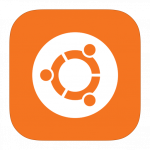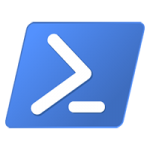FileUnsigner – Remove digital certificates from files
This small tool was created to simplify the process that was discussed at Remove digital signature from a file using C# and simply aid the people that didn’t have the knowledge on how to compile the code posted there.
This is a small standalone tool that will simply remove the digital signature of any file.
The usage is fairly simple. Either drag and drop the files you want to unsign on the application or use command prompt with the following parameters:
FileUnsigner.exe <options> <file1> <file2> …
Current Options:
/f Forces the program to remove a digital signiture even if one is not detected.
Posted in Software Releases.
Tagged C#, csharp, digital signiture, fluxbytes, ImageRemoveCertificate
Remove digital signature from a file using C#
There are two reasons why you might want to consider removing the digital signature from some of the files you are using, especially third party libraries.
The first reason is because in many cases it will greatly speed up your programs start-up time. The reason for that is because if a file is signed with Microsoft digital certificate as an example on runtime it will attempt to verify the signature which in most cases it requires an internet connection. In cases where the user might not have an active internet connection or if the verification attempt is blocked by a firewall or any other reason, it will greatly increase the time your application will take to start.
Another important reason for removing a digital signature from a library you want to distribute alongside with your software is that a lot of users feel alarmed when an application tries to establish a connection at start-up, especially if the type of the application you are making doesn’t sound like the type it requires to connect somewhere.
Thankfully it is fairly easy to remove a signature from a file using the ImageRemoveCertificate API function. Below you can find a snippet that illustrates how it can be implemented.
1 2 | [System.Runtime.InteropServices.DllImport("Imagehlp.dll ")] private static extern bool ImageRemoveCertificate(IntPtr handle, int index); |
1 2 3 4 5 6 7 8 | private void UnsignFile(string file) { using (System.IO.FileStream fs = new System.IO.FileStream(file, System.IO.FileMode.Open, System.IO.FileAccess.ReadWrite)) { ImageRemoveCertificate(fs.SafeFileHandle.DangerousGetHandle(), 0); fs.Close(); } } |
If you would like to use the above code but have no knowladge on how to compile it then simply download the already compiled version from FileUnsigner v1.0.
Posted in C#.
Tagged C#, csharp, digital signiture, ImageRemoveCertificate, snippet, source, winforms
Microsoft Office Professional Plus 2013 Trial now available
Office Professional Plus 2013 is the future of productivity. Office Professional Plus 2013 includes Word, PowerPoint, Excel, Outlook, OneNote, Access, Publisher, and Lync.
Microsoft has announced the release of Microsoft Office 2013 Trial version which is available for free. This version allows users to evaluate the software for 60 days. If you are interested in checking this product out head to http://technet.microsoft.com/en-us/evalcenter/jj192782.aspx.
Microsoft Office 2013 Requirements
- Computer and processor: 1 gigahertz (Ghz) or faster x86- or x64-bit processor with SSE2 instruction set
- Memory (RAM): 1 gigabyte (GB) RAM (32 bit); 2 gigabytes (GB) RAM (64 bit)
- Hard Disk: 3.0 gigabytes (GB) available
- Display: Graphics hardware acceleration requires a DirectX10 graphics card and 1024 x 576 resolution
- Operating System: Windows 7, Windows 8, Windows Server 2008 R2, or Windows Server 2012
- .NET version: 3.5, 4.0, or 4.5
Posted in Microsoft, Software Releases.
Tagged Microsoft, Office, Office 2013
Microsoft Visual Studio 2012
 Microsoft has officially announced the release of Visual Studio 2012.
Microsoft has officially announced the release of Visual Studio 2012.
In addition to the things we know and love about the Visual Studio products, the newest version provides the core tools that are required to build compelling, innovative Windows Metro style applications. There are also numerous of new features and enchantments that come with this version. If you are interested in finding what are those Microsoft already created a web page which you can access here that contains all the information you will need about this release.
Also you need to keep in mind that the interface of the new Visual Studio has changed drastically since this version now uses a Metro style interface. If you are one of those people that didn’t particularly like the Metro style you might need to consider that before rushing to upgrade.
Download Visual Studio 2012 Express for Windows 8
Visual Studio 2012 Online Installer (922kb)
Visual Studio 2012 Offline Installer (403MB)
Visual Studio 2012 Language Pack (20.2MB)
Posted in Microsoft, Tech News.
Tagged metro, Microsoft, Visual Studio, Visual Studio 2012
.NET Framework 4.5
Microsoft has officially announced the release of .NET Framework 4.5 today.
If you are programming in C#, VB.NET or any other language that uses .NET and want to take advantage of the newest features as well as having the ability to create Windows Metro style applications then feel to click the links at the bottom to download the newest version.
It’s also worth to mention that .NET Framework 4.5 is backward-compatible with applications that were built with the .NET Framework versions 1.1, 2.0, 3.0, 3.5, and 4.0. That means you are not required to install all the older versions in order to run application that were created using an earlier .NET Framework version.
Supported Operating Systems
- Windows Vista SP2 (x86 and x64)
- Windows 7 SP1 (x86 and x64)
- Windows 8 (x86 and x64)
- Windows Server 2008 R2 SP1 (x64)
- Windows Server 2008 SP2 (x64)
- Windows Server 2012 (x86 and x64)
Download .NET Framework 4.5
.NET Framework 4.5 Online Installer (Multi-Language)
.NET Framework 4.5 Offline Installer (Multi-Language)
.NET Framework 4.5 Language Pack
Posted in Microsoft, Tech News.
Tagged .NET, .NET Framework, .NET Framework 4.5, Microsoft






















